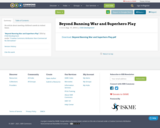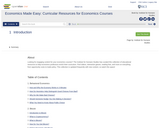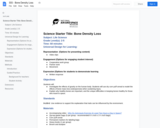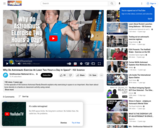
An article about meeting children's needs in violent times.
- Subject:
- Social Science
- Material Type:
- Reading
- Date Added:
- 08/17/2016

An article about meeting children's needs in violent times.

Looking for engaging content for your economics courses? The Institute for Humane Studies has curated this collection of educational resources to help economics professors enrich their curriculum. Find videos, interactive games, reading lists, and more on everything from opportunity costs to trade policy. This collection is updated frequently with new content, so watch this space!

The role of the early childhood educator with children and grief.

This course examines how a variety of cultural traditions propose answers to the question of how to live a meaningful life. It considers the meaning of life, not as a philosophical abstraction, but as a question that individuals grapple with in their daily lives, facing difficult decisions between meeting and defying cultural expectations. The course also provides tools for thinking about moral decisions as social and historical practices, and permits students to compare and contextualize the ways people in different times and places approach fundamental ethical concerns.

This video segment follows neurophysiologist Allen Counter as he studies an epidemic of hearing loss in Moriussaq, Greenland, one of the quietest places on Earth. Footage from NOVA: "Mystery of the Senses: Hearing."

In this lecture, Professor Howie Baetjer of Towson University explains how the market process generates improvements in the human condition, highlighting how profit and loss serve to help people channel their activities in creative and socially useful directions.

Investigate the effects of gravity on the human body.

Astronaut Randy Bresnik explains why exercising in space is so important. Also learn about bone density in a hands-on classroom activity using cereal.

This textbook is not intended to be an exhaustive treatise; rather, it is intended to be far more useful than that for beginning tax law students by equipping the novice not merely with unmoored detail but rather with a rich blueprint that illuminates the deeper structural framework on which that detail hangs (sometimes crookedly). Chapter 1 outlines the conceptual meaning of the term “income” for uniquely tax purposes (as opposed to financial accounting or trust law purposes, for example) and examines the Internal Revenue Code provisions that translate this larger conceptual construct into positive law. Chapter 2 explores various forms of consumption taxation because the modern Internal Revenue Code is best perceived as a hybrid income-consumption tax that also contains many provisions—for wise or unwise nontax policy reasons—that are inconsistent with both forms of taxation. Chapter 3 then provides students with the story of how we got to where we are today, important context about the distribution of the tax burden, the budget, and economic trends, as well as material on ethical debates, economic theories, and politics as they affect taxation.
Armed with this larger blueprint, students are then in a much better position to see how the myriad pieces that follow throughout the remaining 19 chapters fit into this bigger picture, whether comfortably or uncomfortably. For example, they are in a better position to appreciate how applying the income tax rules for debt to a debt-financed investment afforded more favorable consumption tax treatment creates tax arbitrage problems. Congress and the courts then must combat these tax shelter opportunities (sometimes ineffectively) with both statutory and common law weapons. Stated another way, students are in a better position to appreciate how the tax system can sometimes be used to generate (or combat) unfair and economically inefficient rent-seeking behavior.